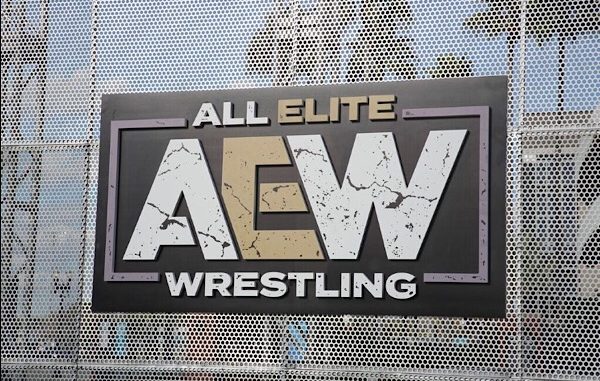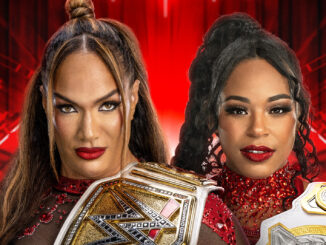
SPOTLIGHTED PODCAST ALERT (YOUR ARTICLE BEGINS A FEW INCHES DOWN)...
During his Starrcast II watch party of the film “Ready to Rumble,” David Arquette lamented to the audience that the director, Brian Robbins, never really found it weird that Rose McGowan (his love interest and Nitro Girl gone bad) had played his ill-fated sister in “Scream.” Given the popularity of the Wes Craven horror flick, that seemed unwise. In fairness, looking back it would not be the sole reason “Ready to Rumble” wasn’t well received, but it was part of a series of decisions made by those in charge that chipped away at what the film could or should be in favor of what they wanted it to be.
After watching AEW Double or Nothing debut live in the venue in Las Vegas, I’m of the opinion that Double or Nothing was a success. However, there were some complaints in terms of perhaps too much reliance on their “Being the Elite” irony and inside jokes to the point of alienating those who are unaware. Given both methods seek to tell stories in a fashion that can be received by all, I figured this would be a great jumping off point for how AEW can continue to grow and evolve without diving into unwatchable camp – and how we, the consumers of the product can best avoid drawing unnecessary battle lines.
Scream’s success in 1996 revolved around two major factors – a director in Wes Craven who knew the subject and audience he was targeting and a thorough plan on how to subvert some of the expected outcomes. For example, using the trope of the killer being inside the house while he’s calling his victim, Craven provided the jump scares and terror you would presume, while also talking via the characters on a meta level about the construction of a traditional horror movie death. This also gave an opportunity for the audience to feel “in” on the experience, while also waiting for the story to develop. By tying those pieces together a younger generation received an “old” experience with new eyes.
For AEW, that is part and parcel of what “Being the Elite” has been about on YouTube, as well as during their inaugural pay-per-view Double or Nothing. From meta stories leaning into assumptions, the newly-minted executive vice presidents are letting the power go to their heads, to the psychology of the battle between Cody and Dustin Rhodes – stirring echoes of Dusty Rhodes versus Tully Blanchard, it’s clear the creative team of Matt Jackson, Nick Jackson, Cody, Kenny Omega, and their agents get the “hits,” so to speak. However, think about the debut of Jon Moxley during the ending segment of the show – no music, no video wall graphic, just a man barreling down the aisle and into the ring to confront Chris Jericho, who is otherwise unaware. That has been a long-standing gripe with many pro wrestling fans in the United States – what is the logic behind the sound tech playing music for someone who wasn’t meant to be in a promotion?
Finally, the usage of YouTube as a medium to carry their stories pre-television and pre-AEW allowed them to create an immersive world that held long-terms storylines across three major promotions and around the world. That level of creativity got them to the point they could launch All Elite Wrestling in the first place; that should not be lost in the conversation. It is also paramount to make the events as inclusive as possible to create opportunities to grow their audience.
When listening to the PWTorch VIP Roundtable podcast on the event after having attended Double or Nothing, editor Wade Keller’s commentary on the usage of the ECW “lights on, lights off” trick, and how it was hokey and unrealistic made me think of the Arquette double-feature comparison. To Wade, the lights were as unrealistic and a potential warning that those in charge could mis-read the room so to speak. For me, the lights trick, akin to Ghostface in “Scream” asking to know the name of the person he’s looking at, creates a familiar formula of action-reaction that ties the viewer to the scene.
However, where I would agree with Wade is rather than continuing to flesh out the anxiety and terror of the tag team (formerly known as the Super Smash Bros.) debuting with said light trick, silence followed, which undercut the entire usage of the trick. That is a “Ready to Rumble” move – using a pro wrestling trope with little regard for how it needs to be framed by the announce crew. What should have been a cool moment for the TV viewer instead became as logically jarring as “Macho Man” Randy Savage being tagged into a match with a store clerk.
(This is an actual scene in the open of “Ready to Rumble.” Don’t believe me? Go watch. I’ll wait…)
This is the line AEW will have to straddle as they build to their October television debut on TNT. For those at home, there were complaints on the Librarian duel during the Kylie Ray interview; in the arena a creative “Holy Shh!” chant erupted. After years of complaints that the WWE points their best work towards the audience watching at home rather than the people used as living set furniture, it was a creative play, but perhaps one that needed to be done elsewhere.
During “Ready to Rumble,” Shane Helms served as David Arquette’s stunt double and also was a panelist at the viewing. Helms mentioned that the director’s views on fans (should be overall-wearing yokels), matches, and the whole business itself ran against the reality of professional wrestling. For AEW, if their first show is any indication, the in-ring component will be more than up to providing a competitve, hard-hitting product. Finding that sweet spot between innovation and tradition is what will be the challenge.
Say, I wonder if they could get Arquette for the first episode?
RECOMMENDED: EDITORIAL: No end in sight when it comes to WWE’s strategy of serving Wall Street at the expense of the fans




Leave a Reply
You must be logged in to post a comment.